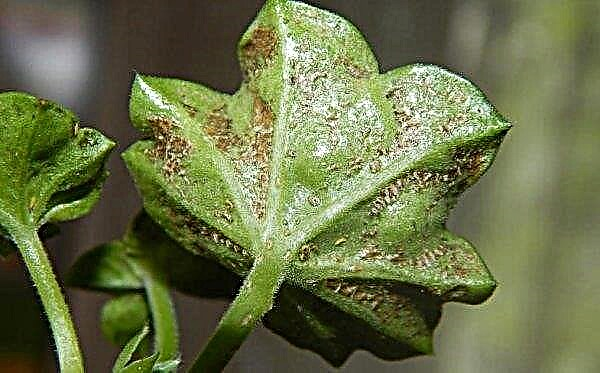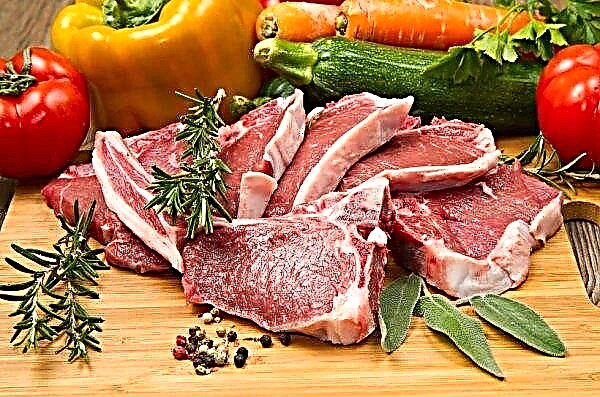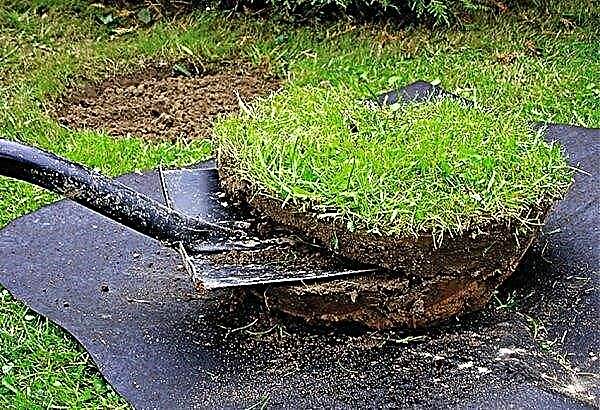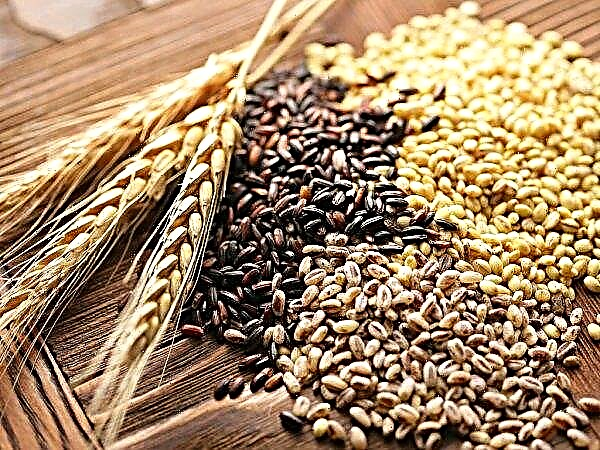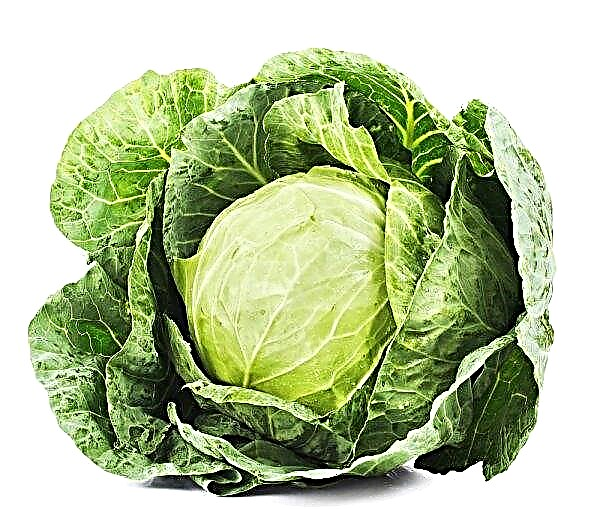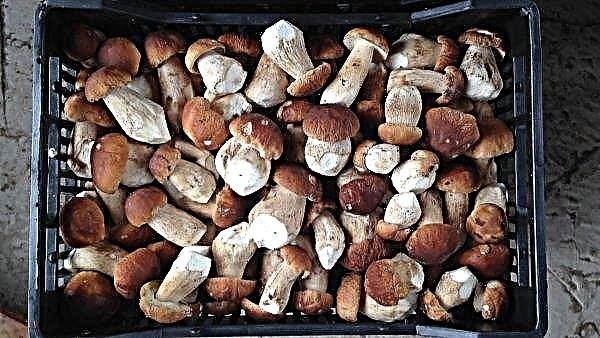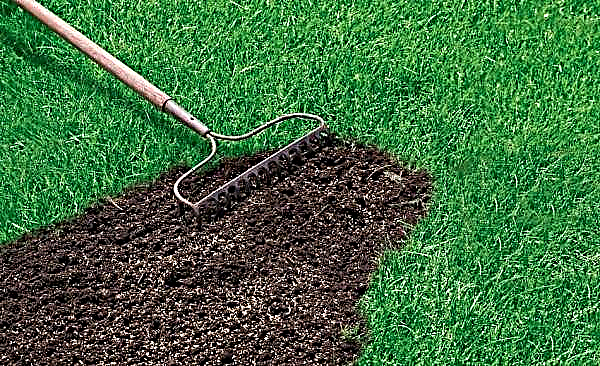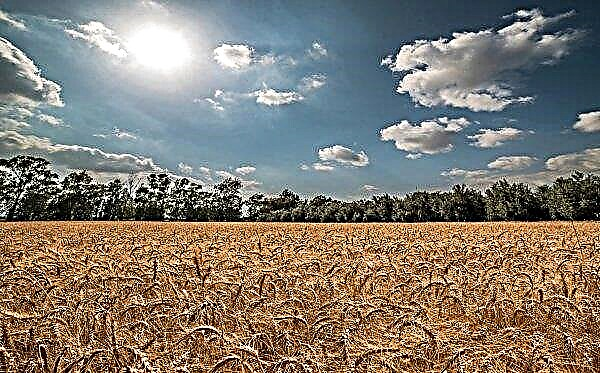The growths that appear on the paws of chickens and cause serious inconvenience to birds are a problem that is familiar to every poultry farmer. Let’s try to figure out why this happens, what disease can testify to, how to treat it, and most importantly, what measures should be taken to prevent the occurrence of such troubles in birds.
The main reasons for the appearance of growths on the paws of hens
Problems with paws in chickens can occur for various reasons, and not all of them are directly related to improper care.
The conditionally possible sources of the appearance of such symptoms can be divided into five large groups:
- Genetic pathologies (congenital diseases).
- Infectious diseases of an invasive nature (associated with the action of viruses, germs, ticks, helminths and other parasites).
- Diseases caused by weak immunity and lack of vitamins.
- Diseases associated with impaired metabolic processes in the body.
- Diseases that directly affect the joints and tendons (for example, due to mechanical damage).
It is sometimes difficult to determine the exact cause of the disease, since pathology can be caused by a combination of several unfavorable factors.
In particular, a bird weakened due to poor genetics or lack of vitamins is more susceptible to bacterial, viral, and other invasive diseases than a strong, healthy chicken kept in ideal sanitary conditions. Thus, the factors that increase the likelihood of outgrowths on the paws of chickens should definitely include:
Thus, the factors that increase the likelihood of outgrowths on the paws of chickens should definitely include:
- an unbalanced diet, in particular, a lack in the nutrition of birds of the necessary vitamins and minerals;
- stresses of chickens (including exceeding noise standards in the chicken coop, a sharp change in lighting, crowding, moving to a new place, a conflict in the herd, unsuccessful vaccination, trauma, attack of a predator, presence of rodents in the house, violation of feeding regimen, hunger, thirst, etc.);
- violation of temperature and humidity;
- dirty and wet litter;
- other violations of sanitary conditions when keeping poultry.
What diseases does the appearance of growths indicate
So, the appearance of growths on the legs of chickens may be the only problem, as, for example, with knemidocoptosis, and may be a sign of a more serious internal pathology.
In both cases, it is impossible to ignore such a symptom, since this can lead to:
- finger necrosis and subsequent claudication;
- complications of the disease up to death;
- spreading the infection to other members of the herd;
- isolation of a sick individual by its tribesmen, including those accompanied by severe peeling, blocking access to food and drink, which often leads to the death of a bird.
 The growth on the legs of a chicken or rooster gives the bird serious discomfort, and therefore it begins to actively peck the problem area of the skin. As a result of damage to the integrity of tissues, the wound site is tightened with a thin film surrounded on all sides by keratinized skin fragments.
The growth on the legs of a chicken or rooster gives the bird serious discomfort, and therefore it begins to actively peck the problem area of the skin. As a result of damage to the integrity of tissues, the wound site is tightened with a thin film surrounded on all sides by keratinized skin fragments.Did you know? A strictly established hierarchy operates in the chicken herd, where each individual takes its own step on this social ladder. To communicate with each other, hens use at least 24 different sounds and an even greater number of characters filed with the help of “body language”.
As the film thickens and new deformations of the skin with the beak of the bird, the growths acquire the structure of a layer cake, covered with scaly plates of white or gray color, which may crack over time.
Having found such signs, usually accompanied by a change in the behavior of the bird (anxiety, refusal to eat, avoiding contact with other members of the herd), the farmer needs to take urgent measures, first of all, to establish an accurate diagnosis.
Consider some of the most common diseases of chickens that cause complications on the legs, including in the form of tumors and growths.
Knemidocoptosis
Knemidocoptosis, popularly known as the "calcareous leg", is the most dangerous, but at the same time the simplest reason for the appearance of growths on the legs of chickens.
Dangerous, because this is the only possible disease with similar symptoms, which is acutely infectious, rapidly spreading to healthy birds and, in addition, dangerous not only for chickens, but also for humans. Simple, since its causative agent is well known, it acts not in the body of the bird, but directly on the skin (more precisely, under it) and therefore can be destroyed with the help of a specific medication.
Simple, since its causative agent is well known, it acts not in the body of the bird, but directly on the skin (more precisely, under it) and therefore can be destroyed with the help of a specific medication.
Important! Knemidocoptosis is a disease caused by the carapace mites of the Sarcoptidae family, namely, two of their species - Knemidocoptes mutans and Knemidocoptes laevis. Their life expectancy is about 8 weeks, during which time each female individual lays about 10 larvae.
The life cycle of these parasites involves activation in the warm season, from May to September, therefore this period is the most likely time for infection. Inadequate lighting in the house contributes to infection.
First of all, the tick infects weakened chickens, therefore inappropriate herd conditions greatly increase the risk of an epidemic.
Once on the skin of a bird, a tick almost invisible to the eye (its body length does not exceed 0.5 mm) gets to the horn cover on its paws, bites into it, settles and begins to multiply, feeding on skin cells, lymph, and later purulent secretions, which are formed on the skin as a result of the life of the parasite.
An incubation period lasts for 3-6 months, during which no obvious signs of the disease are observed (that is why it is believed that chickens up to 5 months of age do not suffer from knemidocoptosis), after which the first symptoms appear, namely:
- damage to the skin on the paws;
- the appearance of growths and tumors, accompanied by severe itching (the bird behaves uneasily and constantly pecks problem areas);
- a change in the structure of the skin on the legs (its surface is covered with exfoliating scales and a light coating);
- painful changes in the joints, rheumatic manifestations, arthritis, tissue necrosis (in later stages).
Acaricidal drugs are used for treatment.
Arthritis and tenosynovitis
Among the diseases associated with inflammatory processes in the joints and tendons, first of all, arthritis and tendovaginitis should be called, respectively. Both pathologies can be caused by a variety of reasons - from birth defects to the effects of injuries or the action of a parasite in the chicken body. At the same time, the likelihood of illness increases if the birds have been walking on cold, wet and dirty surfaces for a long time.
Both pathologies can be caused by a variety of reasons - from birth defects to the effects of injuries or the action of a parasite in the chicken body. At the same time, the likelihood of illness increases if the birds have been walking on cold, wet and dirty surfaces for a long time.
Important! Arthritis (inflammation of the joints and adjacent tissues) is more characteristic of chickens, especially broiler chickens, while adult birds usually suffer from tendovaginitis (inflammation of the tendons).
The main symptoms of the disease:
- limited movement (walking causes the chicken pain, so she tries to move as little as possible);
- lameness (falling on one leg);
- inability to stay on the perch;
- increase in local body temperature in the paw area;
- the appearance of swelling and redness in the area of the joint or tendon, sometimes the joint turns out;
- cramps (in severe cases).
As a rule, treatment is accompanied by antibacterial therapy - the use of sulfa drugs and antibiotics, mainly the penicillin group (Ampicillin, Benzylpenicillin, etc.).
Gout
Gout is a vivid example of a disease associated with a violation of metabolic processes in the body and, unfortunately, rapidly progressing. Technically, its essence is to disrupt purine metabolism and increase the level of uric acid salts in the blood, and, accordingly, the accumulation of excess of this acid in the muscles and joints. However, the reasons leading to such a pathology in chickens (as well as in humans) are still unknown to science. Scientists suggest that gout may develop due to poor-quality food, in particular, containing nitrates and other chemical additives, as well as limited mobility (cellular content, high crowding).
However, the reasons leading to such a pathology in chickens (as well as in humans) are still unknown to science. Scientists suggest that gout may develop due to poor-quality food, in particular, containing nitrates and other chemical additives, as well as limited mobility (cellular content, high crowding).
Symptoms of gout are known to everyone - in birds and humans, the disease proceeds identically:
- activity decreases, apathy and lethargy is manifested;
- limbs take on a deformed shape, all the more noticeable;
- joints lose mobility;
- on the legs there are seals, swelling, neoplasms and growths.
The treatment consists in the use of special drugs that remove uric acid from the joints into the bloodstream and then from the body, as well as in a special diet (limited protein content in food).
Curly fingers
The term "curly fingers" refers to a painful condition expressed in the fact that the bird cannot straighten the fingertips, which greatly complicates its movement.
The symptoms are so obvious that it is almost impossible to make a mistake with the diagnosis, especially since the disease occurs, as a rule, in chickens shortly after birth (another characteristic sign). This condition is accompanied by a slowdown in growth and usually ends with limb paralysis and death. One of the possible reasons for the development of curly fingers is a deficiency of vitamin B2 in the bird's body, so it is very important to feed the chickens in a balanced manner.
One of the possible reasons for the development of curly fingers is a deficiency of vitamin B2 in the bird's body, so it is very important to feed the chickens in a balanced manner.
However, leg paralysis can also occur as a result of genetic pathologies or be the result of gross violations of the conditions of detention - for example, in cells with a mesh coating on the floor or with a very cold floor.
There is no specific treatment. Affected individuals for their own safety are separated from the main herd and fed with foods with a high content of riboflavin or simply killed.
Did you know? In 1945, an incredible incident occurred in America: a rooster not only did not die after its head was chopped off, but also lived after that ... for two years, getting food directly into the throat from a pipette. The most interesting thing is that the entrepreneurial owner of Mike (the so-called rooster) began to show his, to put it mildly, unusual pet for money, having earned on it almost $ 10,000 a month!
The so-called curvature of the fingers has a similar nature, which manifests itself in the fact that the chicken, when walking, does not become on the entire foot, but on its side surface.
If the cause of curliness or curvature of the fingers is due to genetic failures, birds with similar symptoms should be strictly excluded from breeding.
Ways to treat diseases
Since the nature of the growths on the paws of chickens can be completely different, there is no single method for treating this problem. Therapy should not be aimed at eliminating the symptoms, but at combating the disease that caused them.
Drug treatment
Modern veterinary science and pharmacology have a large range of effective drugs that can be used to cope with many diseases affecting farm birds, including diseases that cause leg complications. Consider the most common of these drugs.
Ectomine
Ektomin is a Swiss-made insecticidal drug used to treat knemidocoptosis and other diseases caused by arthropods, helminths and some other parasites. The active substance is cypermethrin, a synthetic pyrethroid. Release form - an emulsion for external use. According to the manufacturer's instructions, the drug is intended for cattle and small cattle, as well as sheep. However, in practice, a low-toxic agent has been shown to be effective against birds.
Release form - an emulsion for external use. According to the manufacturer's instructions, the drug is intended for cattle and small cattle, as well as sheep. However, in practice, a low-toxic agent has been shown to be effective against birds.
The emulsion is diluted in water in a ratio of 1 ml per 1 liter (1: 1000). The resulting solution is used as a bath in which you need to keep a sick bird for 60 seconds. After 2 weeks, re-treatment is carried out.
Trichloromethaphos
"Trichloromethaphos" is another insecticide and acaricidal drug used, in particular, for the treatment of knemidocoptosis. The toxicity of the drug is higher than that of Ectomine. In addition to adult Knemidocoptes, the medicine also has a detrimental effect on their larvae.
The use of the drug is possible in two ways - by spraying the affected areas or by bathing. The choice depends on the number of sick individuals and the severity of their condition. For spraying, the emulsifiable concentrate is diluted with water in a ratio of 1: 200 (0.5% solution), for bathing - in a ratio of 1: 400 (0.25% solution).
Butox
“Butoks” is a systemic preparation intended for the treatment and prophylactic treatment of rooms where birds are located. Effective against various ticks, fleas, bugs and other ectoparasites. The active substance is deltamethrin. The concentration of the working solution is 0.9% of the drug (1 ampoule must be diluted in 1.3 liters of water). If there is a suspicion of knemidocoptosis, a sick bird in groups or individually is bathed in a container with a diluted preparation, after 10 days the procedure is repeated.
The concentration of the working solution is 0.9% of the drug (1 ampoule must be diluted in 1.3 liters of water). If there is a suspicion of knemidocoptosis, a sick bird in groups or individually is bathed in a container with a diluted preparation, after 10 days the procedure is repeated.
An alternative method of application is spraying. In this case, the medicine is diluted in a ratio of 1: 1000 or 1: 500, after which, with the help of a spray gun, the finished solution is applied to the legs and the whole body of the bird (each feather must be processed).
"Mara Garden"
"Mara-garden" is the trade name of the drug ASD-3, which has a pronounced antiseptic and restorative effect. Unlike the previously described products, this drug is specifically intended for the treatment of skin diseases in animals, including ulcers, dermatitis and other lesions of various nature.
At the same time, the drug does not have a pronounced acaricidal effect, its task is only to stop the inflammatory processes, prevent the suppuration of wounds, accelerate their healing and tissue regeneration, and also improve the general condition of the skin.Did you know? Surprisingly, wild hens that live in the natural environment (there are only four of them) are so dexterous and fearless that, according to statistics, they are saved from predator attacks in nine out of ten cases.
It is applied topically, that is, by applying to the affected areas of the skin with the obligatory capture of healthy tissue. Three treatments are usually used at weekly intervals.
Akarin
“Acarin” is an insect acaricide that belongs to the group of macrocyclic lactones and infects ticks and other ectoparasites by the intestinal contact method. This drug is very widely used for the treatment of garden plants, however, for the treatment of knemidocoptosis, it should be purchased in the form of a gel.
The medicine is simply applied to the feet of an affected bird. If necessary, the procedure can be repeated after a few days.
Front line
"Front Line" - an effective French tool for combating ectoparasites in animals, produced in the form of a spray. The active substance is fipronil - a broad-spectrum insecticide. The drug should be sprayed on the affected areas of the skin of the bird, however, this must be done outdoors or in front of an open window to avoid getting the medicine on the mucous membranes of the respiratory tract.
The drug should be sprayed on the affected areas of the skin of the bird, however, this must be done outdoors or in front of an open window to avoid getting the medicine on the mucous membranes of the respiratory tract.
Important! One of the advantages of Front Line over other drugs is its availability: this medicine can be purchased at any pet store, as it is a proven remedy for fleas and ticks in domestic animals - cats and dogs.
Treatment with folk remedies
Folk remedies to combat the growths on the legs of chickens usually come down to conventional disinfection, and therefore are much less effective than medical treatment (especially if it is carried out correctly, in accordance with the recommendations of a veterinarian).
However, if the symptoms of the disease are mild, a quick reaction using "grandmothers" can help much better than belated medical care.
So, when there were problems with the paws of a chicken, our ancestors used such means as:
- warmed up sunflower oil mixed with solid oil (1 tbsp. per 150 ml);
- soap baths;
- Birch tar;
- creolin (phenolic-free coal);
- "Karbofos" or "Chlorophos" (1% solution).
The principle of using these funds may be different. So, for example, vegetable oil applied to the paws of a bird simply blocks the parasite's access to oxygen, which is supposed to cause its death (although how effective this measure is for Knemidocoptes, which parasitize deep beneath the skin, is an open question). Tar has a sharp unpleasant odor that ticks do not like and is designed to scare them away, however, for the chicken itself, such miasms are very stressful. “Karbofos” and “Chlorophos” are proven acaricidal drugs, however, unlike the veterinary drugs listed above, they are highly toxic.
Tar has a sharp unpleasant odor that ticks do not like and is designed to scare them away, however, for the chicken itself, such miasms are very stressful. “Karbofos” and “Chlorophos” are proven acaricidal drugs, however, unlike the veterinary drugs listed above, they are highly toxic.
Thus, the answer to the question of whether it is advisable to resort to treatment methods that are questionable from the point of view of efficiency and safety in the 21st century if there is a civilized alternative, each farmer can find for himself.
Important! Regardless of whether the treatment is carried out with veterinary drugs or folk remedies, it must be accompanied by a thorough disinfectant treatment of the chicken coop, regular bedding changes and other preventive measures that prevent the further spread of the infection.
Prevention of the appearance of growths in chickens on their feet
In order for the paws of all members of the feathered herd to remain healthy, it is necessary to eliminate the main causes of disease in chickens - both infectious and non-infectious.
The standard package of preventive measures includes:
- Conducting a regular examination of each individual in order to timely identify the first signs of damage to the paws or other pathologies.
- Immediate isolation of diseased individuals.
- Compliance with cleanliness in the chicken coop, regular cleaning of the premises and change of litter.
- Organization in the room where the hens are kept, the conditions necessary for bird health - temperature, humidity, lighting, ventilation, sound insulation, etc.
- Careful monitoring of the diet - the use of high-quality feed, their proper balance, feeding the birds strictly according to the regime, etc.
- Use of high feeders and drinking bowls to prevent the bird from stamping on them or sprinkling food (spilling water) on the bedding. Otherwise, the paws of the chickens will be wet, and along with the stools pecking with the food, pathogens of dangerous infections will enter their body.
- Use of two-week quarantine for all newly acquired birds.
- Culling individuals with signs of congenital abnormalities to prevent the manifestation of these diseases in young animals.
- Timely routine vaccinations.
- Prevention of the use of antibiotics for the prevention of morbidity and without the direct appointment of a veterinarian (in order to avoid the formation of microbial strains resistant to antibacterial drugs).
 The appearance of growths on the legs of chickens can be caused by many reasons, however, the most likely of them is the effect of ticks and other parasites. In turn, this is facilitated by poor sanitary conditions in the chicken coop and other negative factors associated with violation of the rules for keeping birds.
The appearance of growths on the legs of chickens can be caused by many reasons, however, the most likely of them is the effect of ticks and other parasites. In turn, this is facilitated by poor sanitary conditions in the chicken coop and other negative factors associated with violation of the rules for keeping birds.Having solved all these problems, the farmer with a high degree of probability will not need to treat chicken paw diseases - either with medication or folk remedies.

